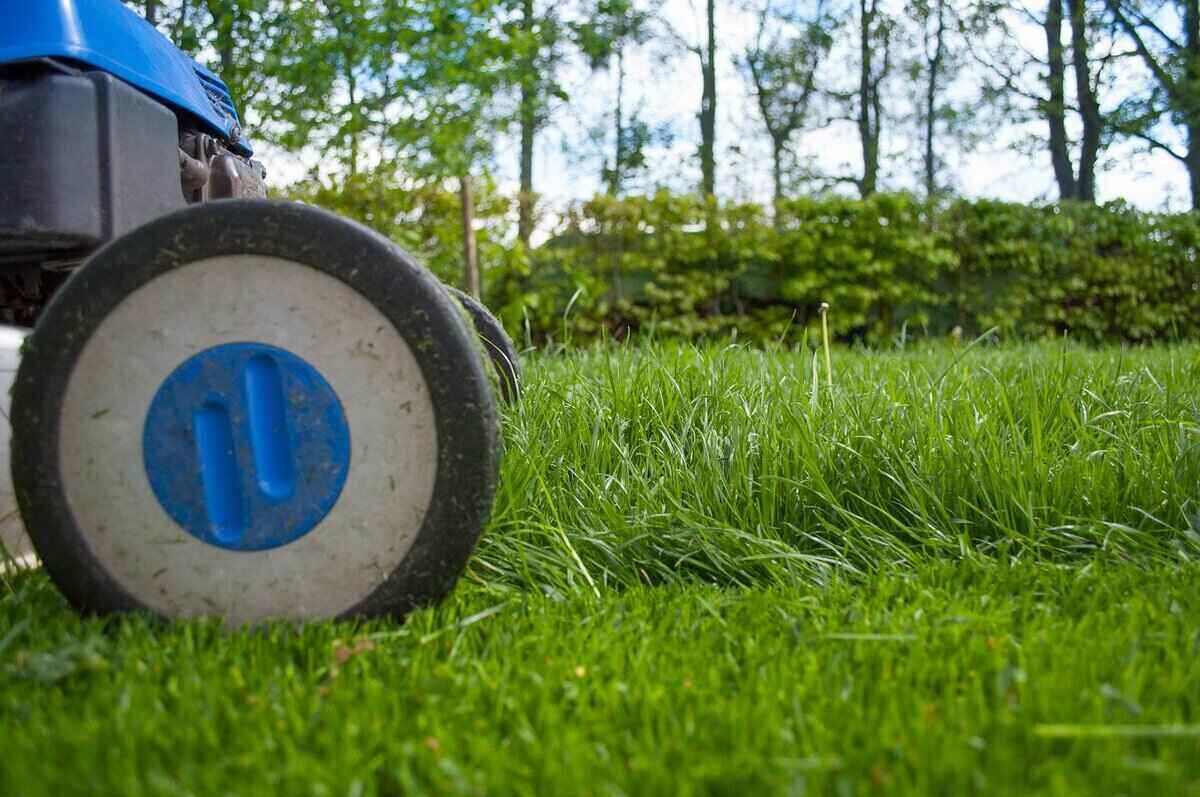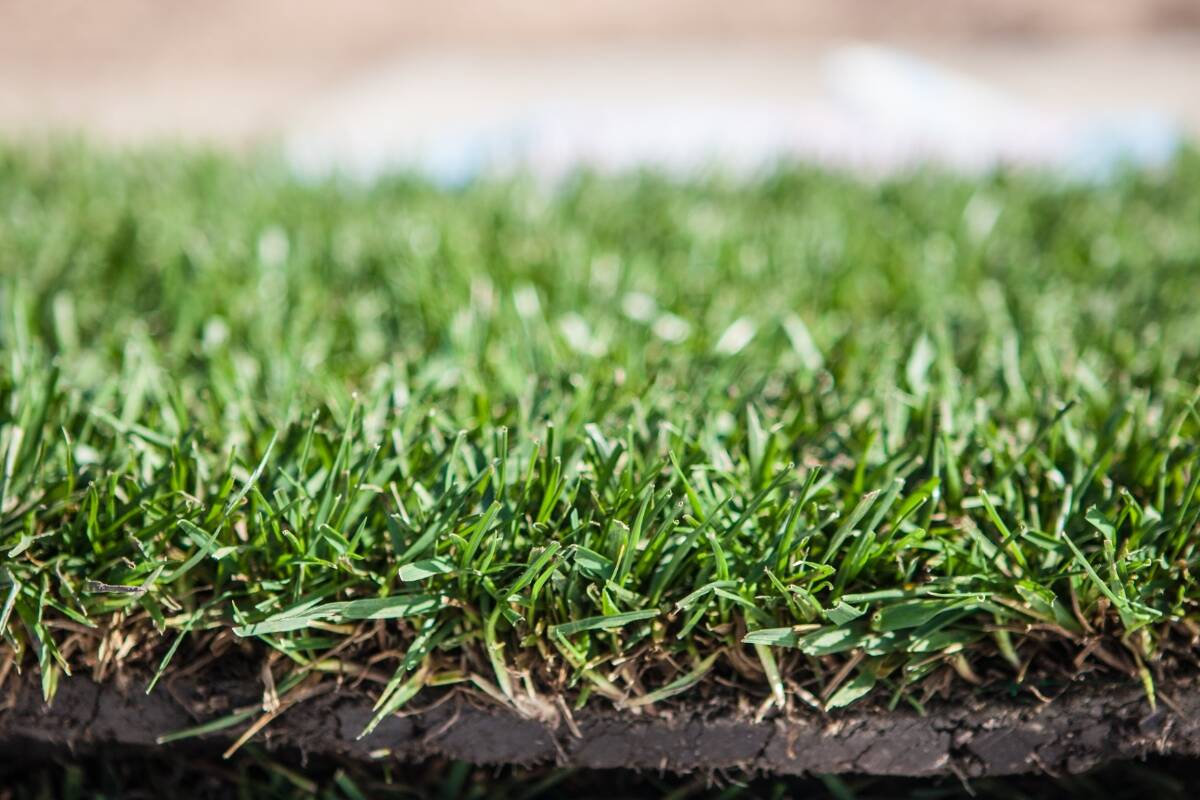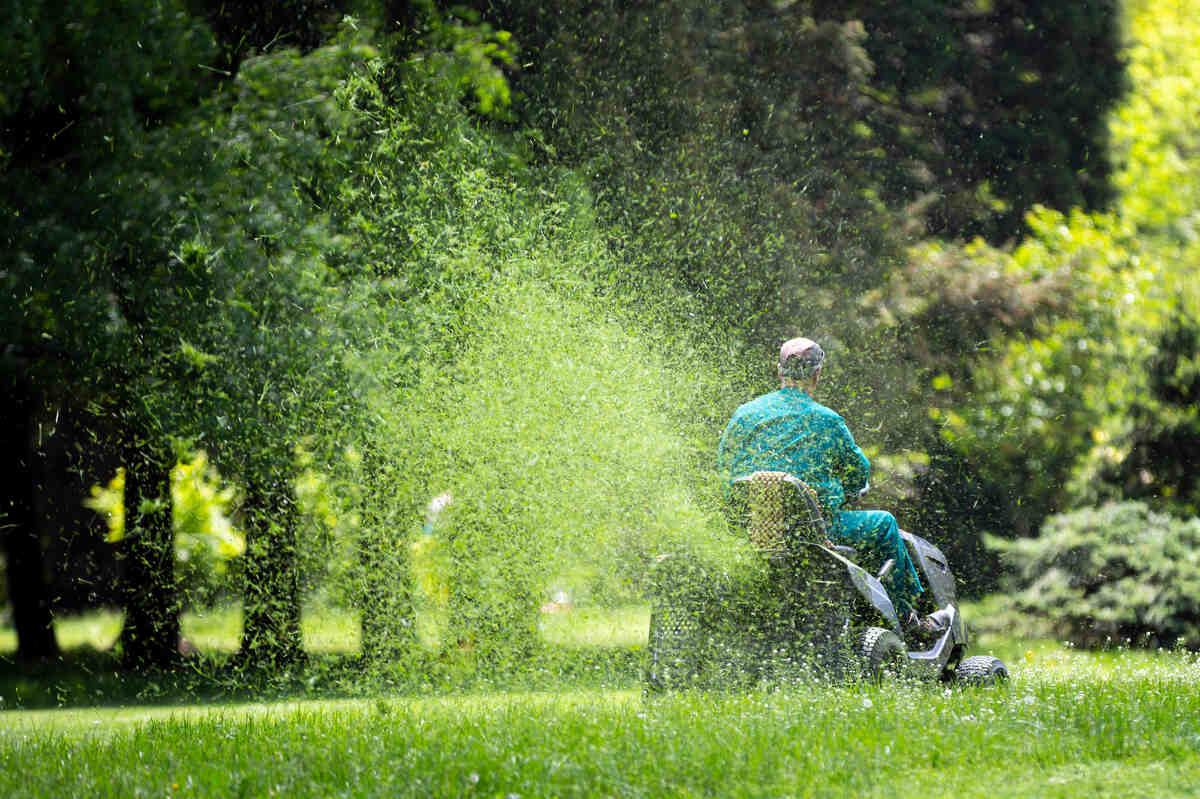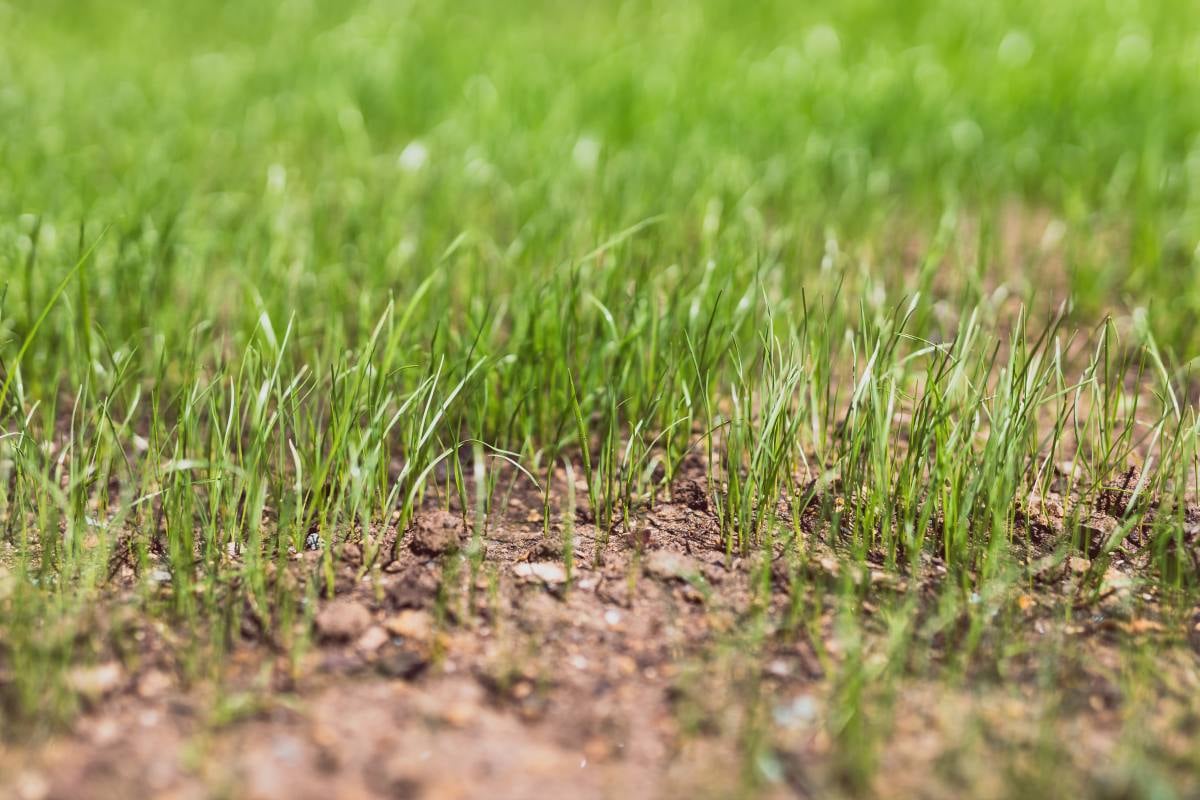
Knowing how and when to cut new grass is the secret to growing and maintaining a lush, green lawn that not only adds beauty but also value to your home. Whether you’re a seasoned gardener or a first-time homeowner, getting the timing right is key to having a healthy and resilient lawn.
For seeded lawns, patience is key, as it may take up to two months before they are ready for their first mow. On the other hand, lawns established with sod might be prepared for mowing within just two to four weeks of planting.
When Is the Right Time to Mow Your New Grass?
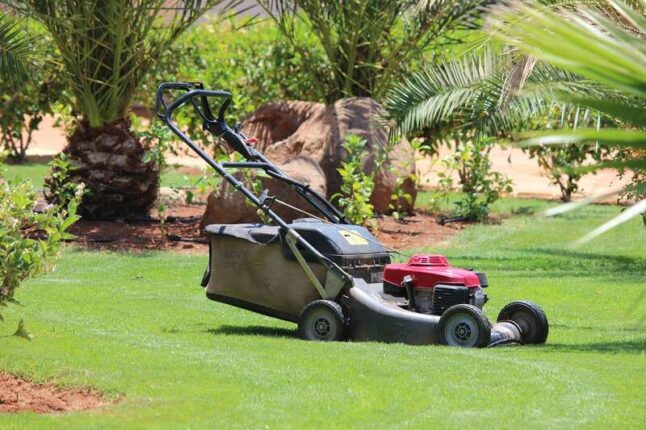
Knowing when to mow your new grass for the first time is crucial for its health and growth. If you mow too soon, then you risk damaging the young, tender shoots before they have the time to establish a strong root system. The timing can vary depending on whether you’ve started your lawn from seed or laid down sod. Let’s break it down:
When to Mow a New Seeded Lawn
Wait around eight weeks after you’ve planted the seed. These little seeds need time to wake up, stretch out, and grow into tall, strong grass. This journey from seed to sprout can take from four to 30 days, depending on what type of grass you’ve got, the weather, and the soil temperature.
After eight weeks, your grass should be about 3 to 4 inches tall, indicating it’s ready for its first trim.
But remember, don’t let your grass grow too long before that first mow. While it’s important to wait the full eight weeks, you also want to consider the one-third rule. This means never cutting more than one-third of the grass blade’s height in a single mow. Cutting too much at once can stress the grass, potentially harming your new lawn.
When to Mow a New Sod Lawn
If you’ve gone the sod route, you’re already a step ahead with a green lawn. But it still needs its first trim at the right time. Usually, this is about two to four weeks after you’ve laid down the sod. This timing can change a bit depending on the weather, what kind of grass you have, its height, and how well the sod is settling in.
A quick way to check if your sod is ready to be mowed is to give it a gentle pull. If it stays put and doesn’t lift up easily, it means the roots are snug in the soil, and you’re good to go. Just make sure the grass is dry and set your mower on a higher setting to keep the grass stress-free.
How to Mow New Grass
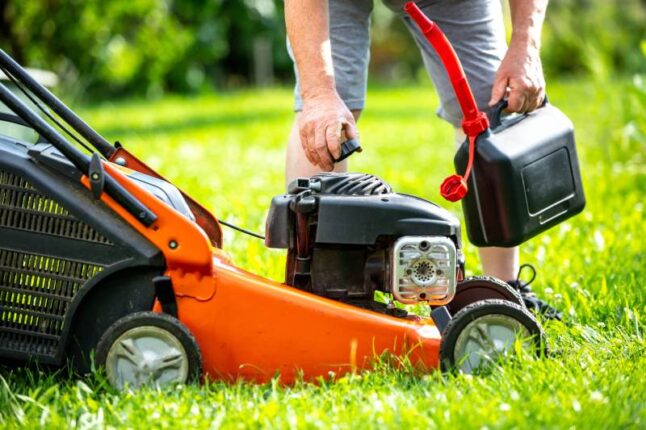
1. Check Your Lawn Mower’s Condition
Make sure the mower blades are sharp (here’s a helpful guide on How to Sharpen Mower Blades). Dull blades can tear the grass instead of cutting it cleanly, which can stress and damage your young grass.
It’s also important to give your mower a good cleaning. Grass clippings and mud stuck to the mower can spread disease and make the mower work harder than it needs to. Plus, a clean mower just works better.
2. Raise the Mowing Height
Raise the mowing height to avoid shocking young grass by cutting it too short. You want to trim it, not give it a buzz cut.
Let the lawn grow to the high end of its recommended range (or even slightly higher) before the first cut, ensuring you only remove one-third of the blade length for optimal growth.
To help you determine the perfect mowing height for your grass type, refer to the table below:
| Grass Type | Suggested Height (Inches) | Mow at This Height (Inches) |
| Tall fescue | 2 – 4 | 2.5 – 5.25 |
| Perennial ryegrass | 2 – 3 | 2.5 – 4 |
| Kentucky bluegrass | 2 – 3 | 2.5 – 4 |
| Fine fescue | 1.5 – 3 | 2 – 4 |
| Bahiagrass | 3 – 4 | 4 – 5.25 |
| Bermudagrass | 1 – 2 | 1.25 – 2.5 |
| Buffalograss | 2 – 4 | 2.5 – 5.25 |
| Carpetgrass | 1 – 2 | 1.25 – 2.5 |
| Centipedegrass | 1.5 – 2 | 2 – 2.5 |
| St. Augustinegrass | 2.5 – 4 | 3.25 – 5.25 |
| Zoysiagrass | 1 – 2.5 | 1.25 – 3.25 |
3. Check the Lawn’s Moisture
Mow when the grass is dry. Wet grass can clump and not cut evenly. Plus, it’s easier to mow and better for your mower.
4. Plan Your Pattern
Learn how to mow a lawn the right way by considering your mowing patt ern. Try not to mow in the same direction every time. Changing your pattern helps the grass grow more upright and prevents ruts in your lawn.
5. Take Your Time
Don’t rush the mow. Especially for the first cut, take it slow to avoid pulling up any young grass that hasn’t fully rooted yet.
6. Mow Again
A few days after the first mow, go over your lawn again to trim it down to its ideal height. This gradual approach helps your lawn adjust without causing shock or stress.
What to Do After Mowing Your New Lawn

Congratulations! You’ve just given your new lawn its first cut. But the care doesn’t stop here. After mowing, there are a couple of key steps you should take to help your lawn recover and thrive:
1. Water Your Lawn
After mowing, give your lawn a good drink. Watering helps the grass recover from the stress of being cut and encourages deep root growth. The best time to water your grass is in the early morning to reduce evaporation. This is especially important if the weather has been hot or dry.
2. Consider Leaving the Grass Clippings
If your mower has a mulching option, consider leaving the grass clippings on the lawn. These clippings can act as a natural fertilizer, returning essential nutrients back to the soil. It’s like giving your lawn a little health boost with every mow. Plus, it can save you time and effort in cleaning up.
To learn more about the benefits of composting grass clippings, explore our guide, “Reasons to Use Grass Clippings as Mulch.”
3. Monitor Your Lawn’s Health
After the first mow, keep an eye on your lawn’s health. Look for signs of stress, such as yellowing leaves or patches where the grass isn’t growing as vigorously. These could be signs that your lawn needs a bit more TLC, whether it’s more water, less foot traffic, or a nutrient boost.
4. Plan Your Next Mow
Don’t wait too long for the next mow. Regular mowing encourages your grass to grow thick and lush, but remember the rule of thumb: never cut more than one-third of the grass blade’s height at a time. Planning your mows based on how quickly your lawn grows can help maintain its health and appearance.
5. Check for Weeds
After mowing, it’s a good time to check for any weeds that might be trying to take hold in your lawn. Early detection and weed control can prevent them from spreading and competing with your grass for nutrients and water.
FAQ About Cutting New Grass
Can I walk on my new lawn before the first mow?
It’s best to wait until your new grass is strong enough to withstand a bit of foot traffic before walking on it. Typically, this means waiting until it’s been mowed at least once. Walking on it too soon can compact the soil and damage tender young shoots.
Why is my new grass turning yellow after mowing?
Yellowing after mowing can happen for a few reasons, such as cutting the grass too short or using a dull mower blade that tears rather than cuts the grass. To fix this, make sure your mower blade is sharp and you’re not cutting more than one-third of the grass blade’s height.
Can I use fertilizer on my new lawn before the first mow?
If you fertilized and planted grass seed at the time, it’s best to wait until after the first few mows before reapplying fertilizer to your new lawn. If you didn’t fertilize when planting seed, still continue to wait until after the first mow. Early application can burn tender young grass.
Initially, focus on proper watering and mowing practices to establish your lawn. After it’s more established, you can start a fertilization regimen based on the specific needs of your grass type.
Hire a Pro to Cut the New Grass
Navigating the early days of lawn care can be tricky, but with the right approach, your new grass can grow into a lush, healthy lawn. Remember, patience and proper mowing practices are key to nurturing young grass.
If you’re unsure about when to mow, how to prepare, or how to care for your lawn after mowing, LawnStarter is here to help. Connect with lawn care experts who can handle the first mow, ensuring your lawn gets the best start possible.
Main Photo Credit: Adobe Stock

